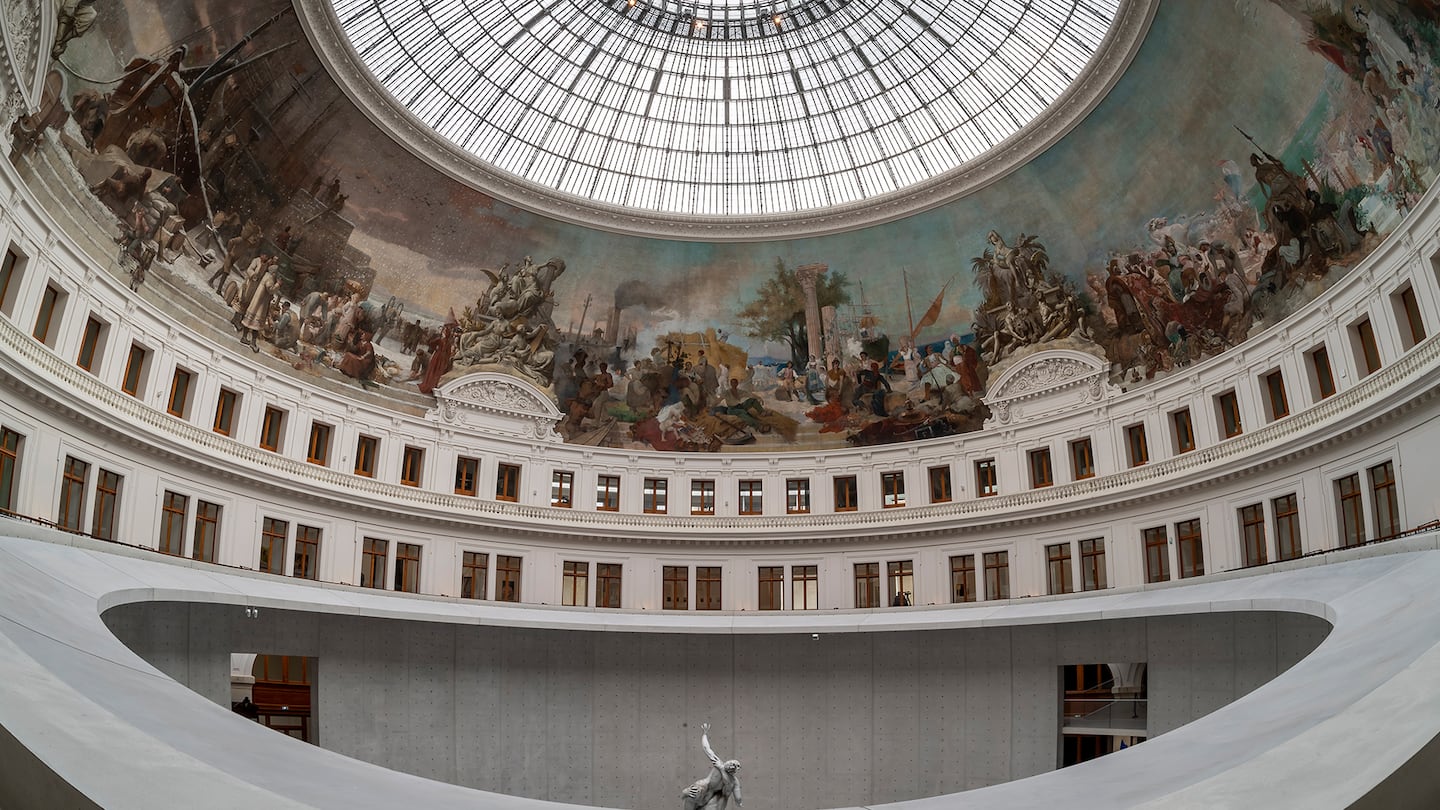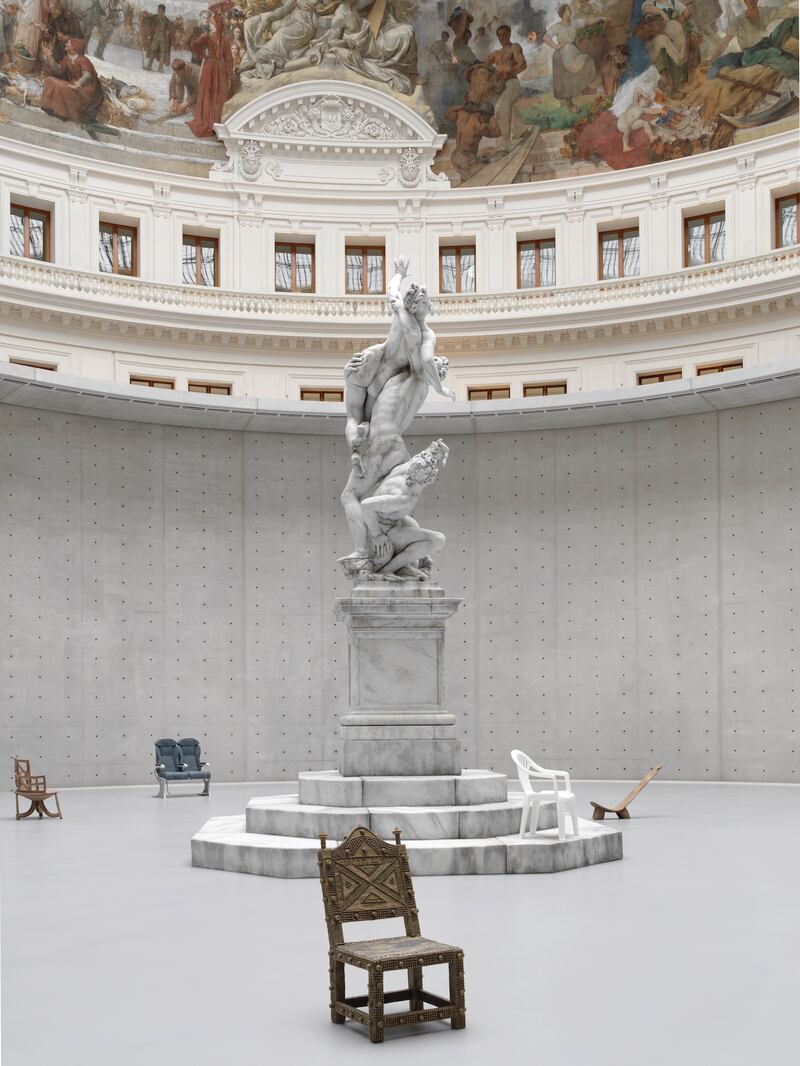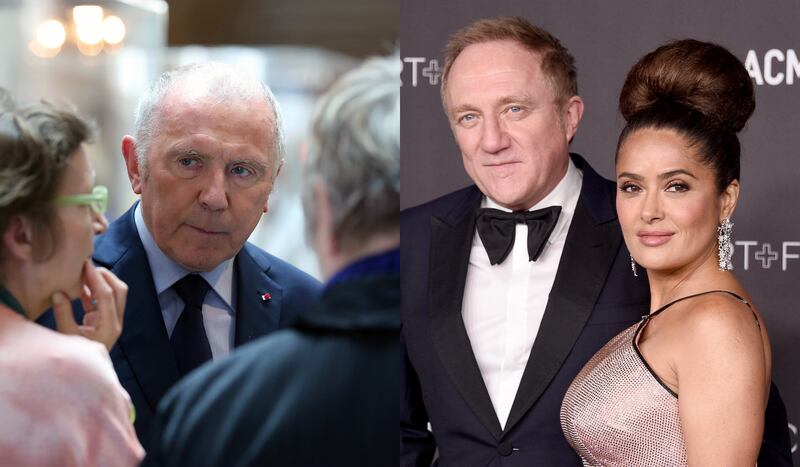
The Business of Fashion
Agenda-setting intelligence, analysis and advice for the global fashion community.

Agenda-setting intelligence, analysis and advice for the global fashion community.

It isn’t every day that Paris gets a new museum, much less one in the middle of the Right Bank, just steps from the city’s busiest metro station.
So Kering founder François Pinault’s contemporary art foundation, housed in the Bourse de Commerce (the former Paris Stock Exchange), has been a hotly-anticipated addition to the French capital’s cultural fabric throughout a $194 million renovation by star architect Tadao Ando, both as a central Paris hub for exhibitions and events, and as a chance to finally see the 84-year-old billionaire’s extensive art collection in his home country. (Pinault’s Palazzo Grassi museum in Venice, which opened in 2006, is already legendary among art aficionados).
The new museum, set to open to the public on May 22 after a year-long delay due to coronavirus, could give contemporary art a bigger platform in Paris, a city better known for the classics, as well as further fuel the transformation of its Châtelet neighbourhood, coming on the heels of a sweeping renovation to the area’s train station, shopping mall and theatre, and just ahead of the reopening of the nearby LVMH-owned Samaritaine department store and luxury hotel.
The opening is also the latest soft-power push from the billionaire Pinault family, which owns luxury brands including Gucci, Saint Laurent and Bottega Veneta through the listed group Kering, as well as auction house Christie’s through its private holding Artemis.
ADVERTISEMENT
The Pinault fortune is one-third the size of LVMH chairman Bernard Arnault’s. The Pinaults also trail other prominent French families such as L’Oréal’s Bettencourts and Hermès’ Dumas clan. And yet even with a lower net worth, the Pinault family holds its own when it comes to visibility and cultural relevance in its industries.

Personal Passion
Pinault stepped back from managing his company, then called Pinault-Printemps-Redoute, in 2003 to focus on his “cultural project,” a fast-expanding art collection. He began developing his museum in Venice after attempts to install his collection on Paris’ Île Seguin stalled.
Pinault became known for bringing an element of surprise to both his acquisitions and the events staged by his foundation. While his collection of contemporary art is estimated to be among the world’s most valuable and includes works from art market stars like Jeff Koons and Damien Hirst, he also pursued more personal picks, extensively collecting and providing a platform for artists including Luc Tuymans, Bruce Nauman and Claire Tabouret.
This personal approach, as well as Pinault’s commitment to novelty, were on display in the Bourse de Commerce’s first exhibition. Works by well-established figures championed by Pinault, such as David Hammons and Marlene Dumas, were interspersed with works by younger painters like Antonio Oba and Xinyi Cheng.
The central rotunda features a group of wax statues by Urs Fischer, including a life-sized replica of Giambologna’s Rape of the Sabine Women, all of which are set to be progressively melted into a giant heap. For visitors, that means “if you came every day you would see something different,” said museum director Martin Bethenod.
While Bourse de Commerce’s programming won’t change quite that fast, parts of the collection will be swapped out regularly without closing for full overhauls. It’s a clear contrast with rival Arnault’s museum, the Fondation Louis Vuitton set on the outskirts of Paris in the Bois de Boulogne, which draws visitors primarily by staging two major shows each year, including blockbuster retrospectives for artists like Jean-Michel Basquiat or Cindy Sherman.

Soft Power
ADVERTISEMENT
The foundation, and all of Pinault’s art initiatives, are first and foremost “a personal passion,” said Katherine Ross, a former Sotheby’s executive who also worked as an advisor to LVMH and Prada. But that doesn’t mean the family won’t derive strategic benefits.
“It creates a better image for brands and their leaders to be seen as involved in the cultural space,” she said.
Wealthy families giving back to their communities through cultural institutions is a time-honoured tradition that’s especially important in luxury fashion. Even though most consumers don’t connect the Pinault name to its brands like Gucci, maintaining both industry and public admiration and goodwill can enhance a label’s success. Prada, for example, has been leaning on the mystique of its charismatic owner Miuccia Prada more than ever in the years since the designer launched her namesake art foundation in Milan, which shifted the city’s cultural rhythm and raised its appeal for young visitors.
The Pinault family has already been expanding its “soft power” and cultural clout in recent years, primarily through corporate activism.
Pinault’s son François-Henri, Kering’s current president and chief executive, has encouraged fashion makers to be more transparent around environmental impact. Rival brands protested that they were addressing environmental challenges behind closed doors, but François-Henri’s more open approach put Kering at the forefront of the sustainability debate. French President Emmanuel Macron then tapped him to spearhead a global “fashion pact” organised on the margins of the G7 to encourage brands to agree to targets like limiting carbon emissions and eliminating plastic packaging.
And at the Cannes festival, where François-Henri is usually accompanied by his spouse, the actress and producer Salma Hayek Pinault, he has used Kering’s platform as a sponsor to promote discussion on the role of women in the film industry. (As a longtime campaigner for women’s opportunity and diversity in film and on TV, Hayek Pinault is an influential voice in her own right. Her production company Ventanarosa signed a first-look deal with HBO Max, and is currently adapting Leslie Lehr’s “A Boob’s Life” for the platform.)
The halo generated by the Pinault clan’s activism and cultural activities helped the family to weather the scandal of a $1.4 billion settlement with Italian tax authorities in 2019.
The museum’s opening extends the family’s “soft power” further beyond activism and more deeply into culture. Its presence in Paris will surely expand awareness of Pinault’s activities outside the bubble of contemporary art, where he is already a towering figure.
ADVERTISEMENT
The Bourse de Commerce “will likely have a much larger audience and a different dynamic” than the Palazzo Grassi, Ross said. “It won’t just be tourists; I think there will be return people going often. This will have a larger impact.”
Related Articles:
Kering’s Francois Pinault Becomes Latest Luxury Tycoon to Plow Into SPACs
After preserving his fashion empire’s independence for decades, the 89 year-old designer is taking a more open stance to M&A.
The sharp fall in the yen, combined with a number of premium brands not adjusting their prices to reflect the change, has created a rare opportunity to grab luxe goods at a discount.
Fashion’s presence at Milan Design Week grew even bigger this year. Savvy activations by brands including Hermès, Gucci, Bottega Veneta, Loewe and Prada showed how Salone has become a ‘critical petri dish for dalliances between design and fashion,’ Dan Thawley reports.
The Hood By Air co-founder’s ready-to-wear capsule for the Paris-based perfume and fashion house will be timed to coincide with the Met Gala in New York.